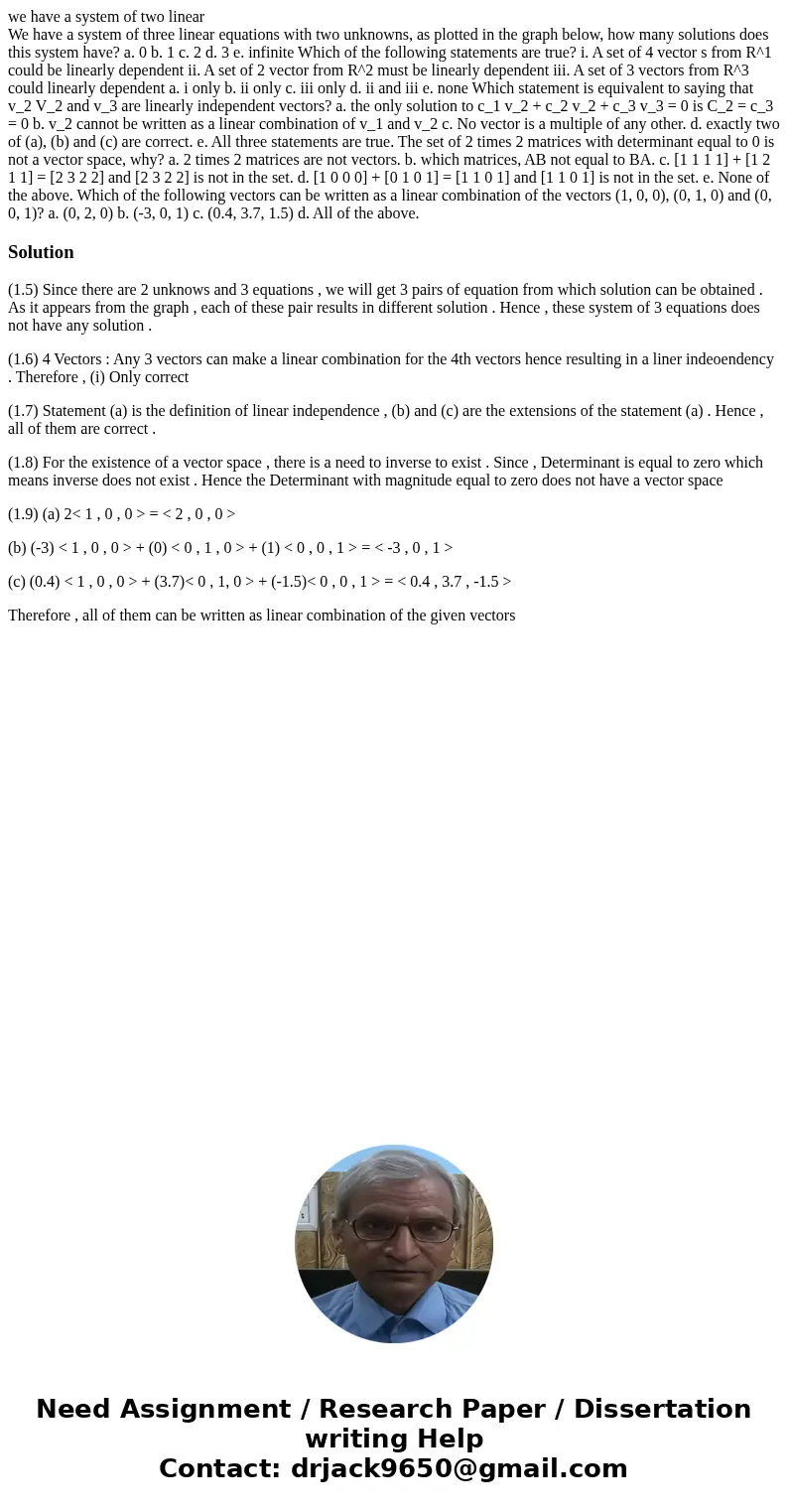we have a system of two linear
We have a system of three linear equations with two unknowns, as plotted in the graph below, how many solutions does this system have? a. 0 b. 1 c. 2 d. 3 e. infinite Which of the following statements are true? i. A set of 4 vector s from R^1 could be linearly dependent ii. A set of 2 vector from R^2 must be linearly dependent iii. A set of 3 vectors from R^3 could linearly dependent a. i only b. ii only c. iii only d. ii and iii e. none Which statement is equivalent to saying that v_2 V_2 and v_3 are linearly independent vectors? a. the only solution to c_1 v_2 + c_2 v_2 + c_3 v_3 = 0 is C_2 = c_3 = 0 b. v_2 cannot be written as a linear combination of v_1 and v_2 c. No vector is a multiple of any other. d. exactly two of (a), (b) and (c) are correct. e. All three statements are true. The set of 2 times 2 matrices with determinant equal to 0 is not a vector space, why? a. 2 times 2 matrices are not vectors. b. which matrices, AB not equal to BA. c. [1 1 1 1] + [1 2 1 1] = [2 3 2 2] and [2 3 2 2] is not in the set. d. [1 0 0 0] + [0 1 0 1] = [1 1 0 1] and [1 1 0 1] is not in the set. e. None of the above. Which of the following vectors can be written as a linear combination of the vectors (1, 0, 0), (0, 1, 0) and (0, 0, 1)? a. (0, 2, 0) b. (-3, 0, 1) c. (0.4, 3.7, 1.5) d. All of the above.
(1.5) Since there are 2 unknows and 3 equations , we will get 3 pairs of equation from which solution can be obtained . As it appears from the graph , each of these pair results in different solution . Hence , these system of 3 equations does not have any solution .
(1.6) 4 Vectors : Any 3 vectors can make a linear combination for the 4th vectors hence resulting in a liner indeoendency . Therefore , (i) Only correct
(1.7) Statement (a) is the definition of linear independence , (b) and (c) are the extensions of the statement (a) . Hence , all of them are correct .
(1.8) For the existence of a vector space , there is a need to inverse to exist . Since , Determinant is equal to zero which means inverse does not exist . Hence the Determinant with magnitude equal to zero does not have a vector space
(1.9) (a) 2< 1 , 0 , 0 > = < 2 , 0 , 0 >
(b) (-3) < 1 , 0 , 0 > + (0) < 0 , 1 , 0 > + (1) < 0 , 0 , 1 > = < -3 , 0 , 1 >
(c) (0.4) < 1 , 0 , 0 > + (3.7)< 0 , 1, 0 > + (-1.5)< 0 , 0 , 1 > = < 0.4 , 3.7 , -1.5 >
Therefore , all of them can be written as linear combination of the given vectors

 Homework Sourse
Homework Sourse